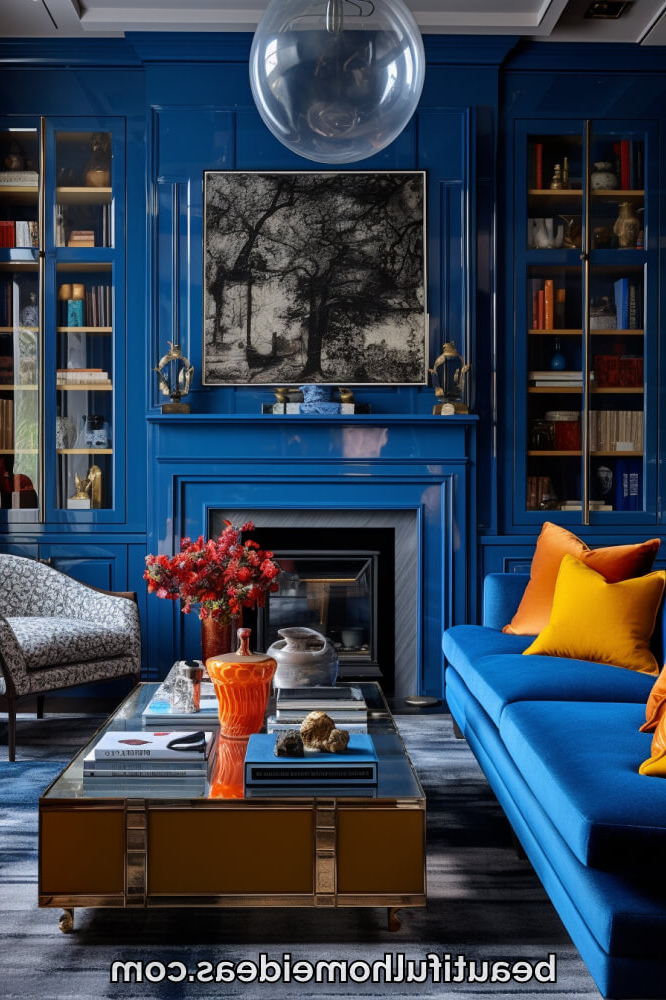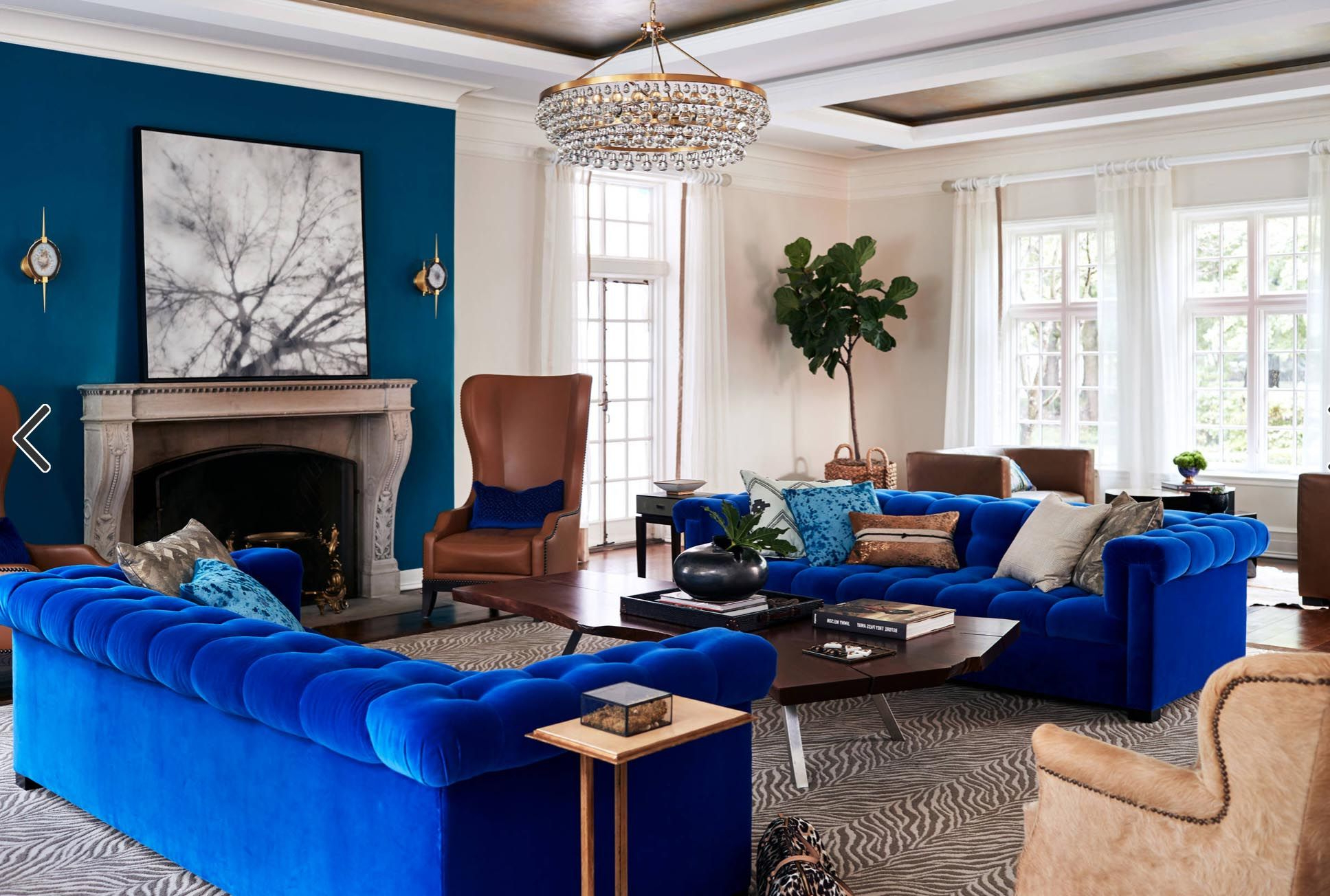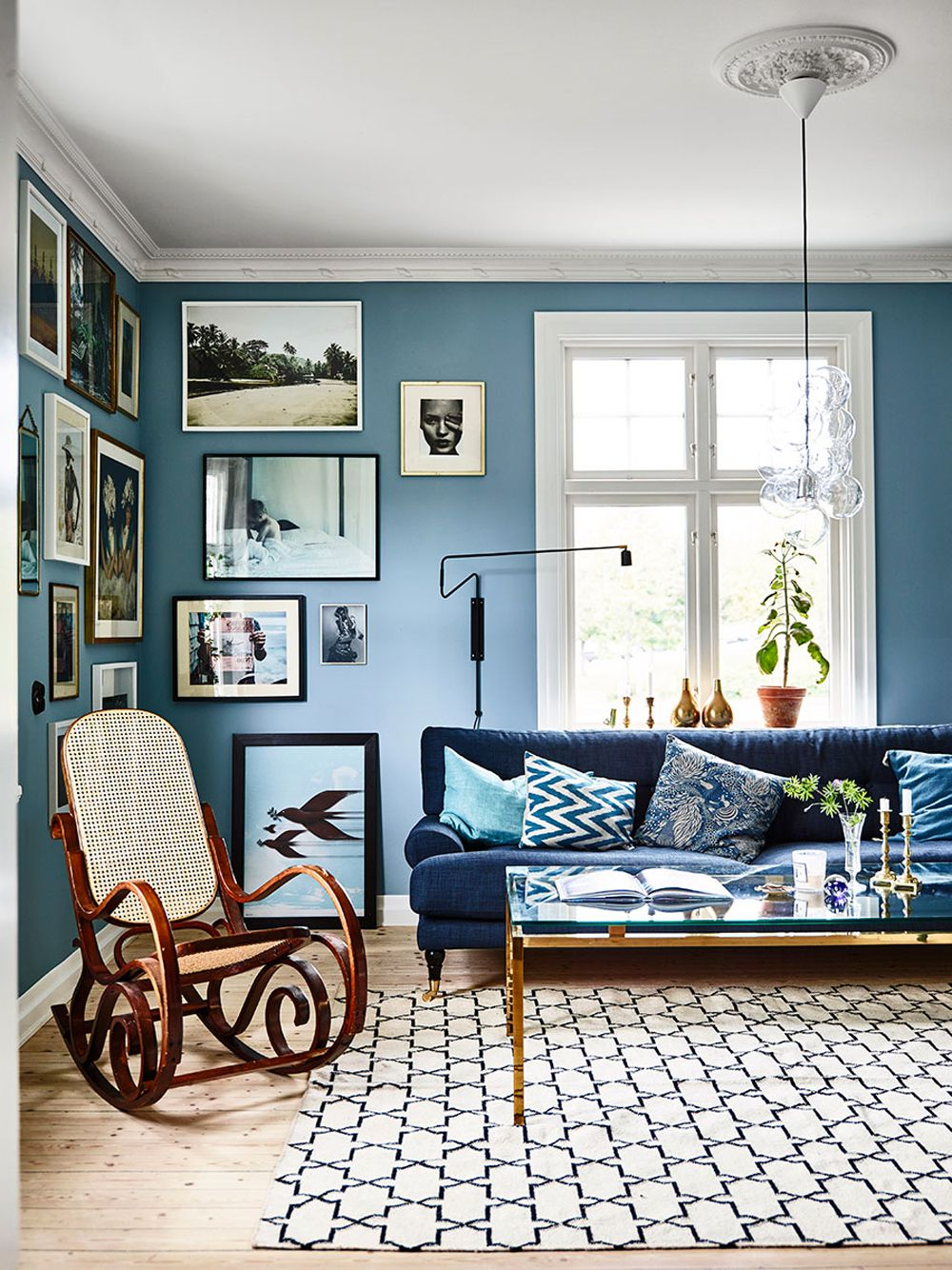There’s something magical about a room that feels alive with sunlight. When you combine the calming power of blue tones with strategic lighting choices, you create a space that’s both serene and energizing. Imagine coming home to a living area where morning rays dance across soft blues and where afternoon light creates gentle shadows that add depth and character. This isn’t just about aesthetics – it’s about crafting a space that supports your well-being while looking absolutely gorgeous.
Light is one of the most powerful elements in interior design, and when you pair it with the soothing nature of blue, you get something truly special. Blue living rooms have become incredibly popular because they offer that sense of calm and tranquility that many of us crave in our daily lives. But here’s the thing – if you want to make your blue space feel truly vibrant and inviting, you need to work with natural light rather than against it. The right approach can transform a dark, dreary room into a bright, cheerful haven. It’s not just about adding more windows or removing heavy curtains. It’s about understanding how light moves through your space and using that knowledge to enhance your blue color scheme. Whether you’re starting fresh or updating an existing space, this guide will show you how to maximize natural light in ways that celebrate your love for blue while keeping your room feeling fresh and airy.
Understanding How Light Interacts with Blue Colors
Blue is a fascinating color when it comes to light. It naturally absorbs some wavelengths while reflecting others, which means the way it looks changes dramatically depending on the time of day and weather conditions. In the morning, when the sun is low, blue walls can appear almost purple or deep navy. By midday, they might look more like a crisp ocean blue. As evening approaches, those same blues can take on a warmer, more golden tone. This is why choosing the right shade of blue matters so much. Light-colored blues like sky blue or powder blue reflect more light and make spaces feel bigger and brighter. Darker blues like navy or midnight blue create a cozy atmosphere but require more careful consideration of lighting. Think about how you want your room to feel during different times of day. Do you want it to feel fresh and airy in the morning? Or do you prefer a more intimate setting in the evening? Understanding these nuances helps you choose the perfect blue palette that works with your lifestyle and natural light patterns.
Strategic Window Placement and Treatment Choices
The first step in maximizing natural light is knowing where your windows are and how to work with them. If you have large windows, great! But even small windows can provide plenty of light if you’re smart about it. The key is avoiding anything that blocks or dims the incoming light. Heavy drapes, thick blinds, or frosted glass can all reduce the amount of natural light entering your space. Instead, consider sheer curtains that let light through while still offering privacy. You can also use reflective surfaces to bounce light around the room. A mirror placed opposite a window can double the amount of light that reaches your blue walls. Another smart move is to keep window treatments simple and lightweight. Consider installing a single set of blinds that you can adjust throughout the day, or go for roller shades that you can pull up completely when you want maximum light. The goal is to have full control over your light levels without sacrificing brightness. Sometimes, the best solution is to remove window treatments entirely and embrace the natural flow of light into your space.
Choosing the Right Blue Shades for Maximum Brightness
Not all blues are created equal when it comes to maximizing light. Some shades actually make a room feel smaller and darker, while others create the illusion of spaciousness and openness. When selecting blue paint or fabric, pay attention to undertones. Cool blues with gray or green undertones tend to make spaces feel larger and more open. Warm blues with yellow or orange undertones can make a room feel cozier but may require more light to look its best. For a bright and airy feeling, consider lighter blues like pale aqua, baby blue, or soft periwinkle. These colors reflect light well and won’t make your space feel cramped. If you’re working with a darker blue, you’ll want to make sure you have adequate artificial lighting as backup. Many designers recommend using a lighter blue on the ceiling to make a room feel taller and more expansive. You can also create a layered effect by using different blues on various walls – perhaps a deeper blue on one wall as an accent while keeping the others light and bright. This creates visual interest while maintaining the brightness you want.
The Power of Reflective Surfaces and Mirrors
Mirrors are perhaps the most underrated tool for maximizing natural light in any room, especially when you’re working with blue tones. They don’t just reflect light – they multiply it. A strategically placed mirror can make a small blue room feel twice as big and twice as bright. When you position a mirror opposite a window, you’re essentially creating a second light source. The reflection bounces light around the room, filling corners and areas that might otherwise remain dim. But mirrors aren’t just about size – they’re also about placement. A large mirror on the wall opposite a window can make the entire room feel more luminous. You can also use smaller mirrors as decorative elements that catch and redirect light. Try placing a mirror near a light fixture or on a wall that gets direct sunlight. The effect is dramatic and immediate. Don’t forget about other reflective surfaces too. Metallic accents, glossy finishes, and even light-colored wood furniture can help bounce light around your space. The key is to use these elements thoughtfully rather than overwhelming the room with too many reflections.
Smart Furniture Placement for Optimal Light Flow
How you arrange your furniture can either enhance or hinder the natural light in your blue living room. The worst thing you can do is block windows with large furniture pieces. A sofa positioned directly in front of a window can cut off half your natural light. Instead, try to keep your furniture away from windows, or use smaller pieces that don’t obstruct the view. If you have a large window, consider positioning seating areas to face it, so you can enjoy the light while sitting. You can also use furniture to create light pathways. For example, placing a tall bookshelf or console table along a wall can guide the eye toward a window, making the light feel more focused and intentional. Another tip is to avoid placing dark-colored furniture in front of windows, as this can create shadows and make the room feel heavier. Light-colored furniture, especially white or cream, helps maintain the brightness you’re trying to achieve. Remember, your furniture should work with the light, not against it. Think about how the light will fall on each piece throughout the day and plan accordingly.
Artificial Lighting That Complements Natural Light
Even with the best natural light, you’ll want some artificial lighting to fill in the gaps, especially during cloudy days or evening hours. The key is choosing lights that complement rather than compete with your natural light. LED bulbs with warm white or daylight settings work best for blue rooms. Avoid harsh fluorescent lights that can make everything look cold and uninviting. Instead, opt for softer, more natural-looking bulbs that maintain the warmth of your blue color scheme. Layer your lighting with different sources – ambient lighting from ceiling fixtures, task lighting from table lamps, and accent lighting from wall sconces. This creates a more dynamic and comfortable environment. Consider installing dimmer switches so you can adjust the lighting based on the time of day and your mood. During the day, you might want to keep things bright and airy, but in the evening, you can lower the lights to create a more intimate atmosphere. The goal is to have lighting that enhances your blue space rather than competing with it.
Creating a blue living room that maximizes natural light is both an art and a science. It requires understanding how light behaves, how colors interact with that light, and how to strategically place every element in your space. The result is a room that feels alive and vibrant, regardless of the time of day. Whether you’re painting your walls a soft sky blue or incorporating blue accents throughout your decor, remember that light is your biggest ally. By choosing the right blue tones, using reflective surfaces wisely, and arranging your furniture to let light flow freely, you can create a space that’s both beautiful and functional. The beauty of this approach is that it works with your natural environment rather than fighting against it. Your blue living room becomes a sanctuary that responds to the changing light throughout the day, offering you a different experience every time you enter. It’s not just about making your space look good – it’s about making it feel good too. With thoughtful planning and a little creativity, you can transform any blue room into a bright, welcoming space that truly captures the essence of natural light.















